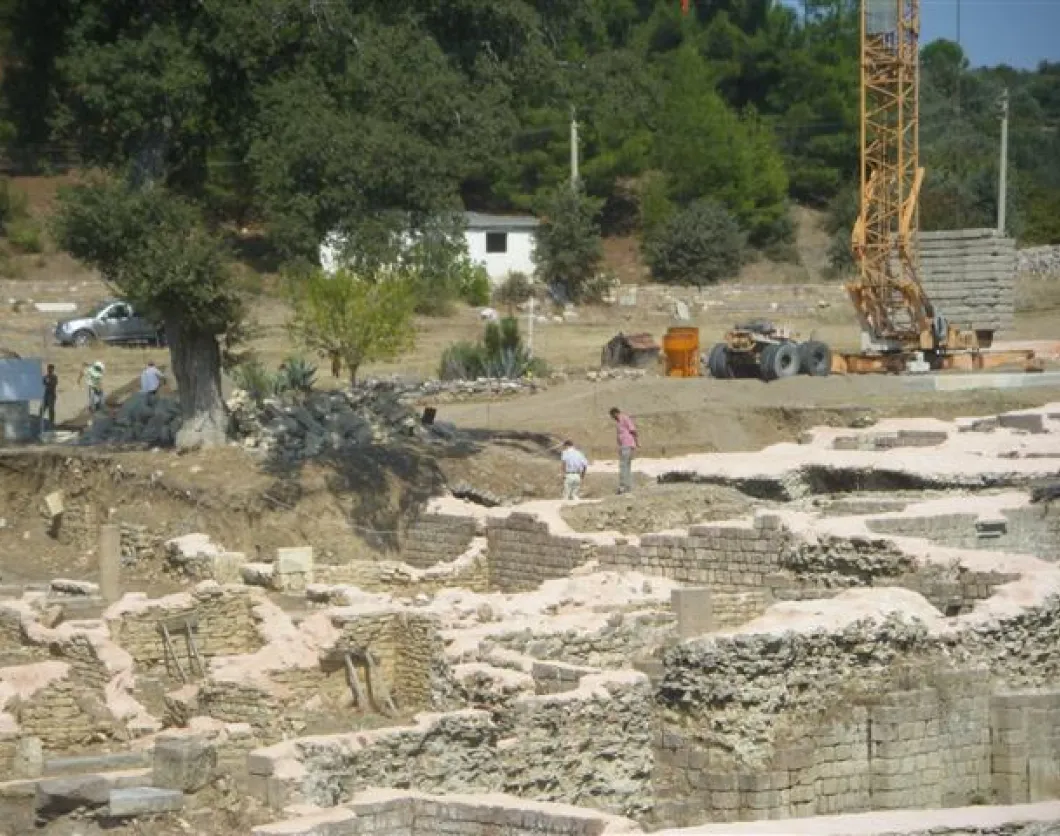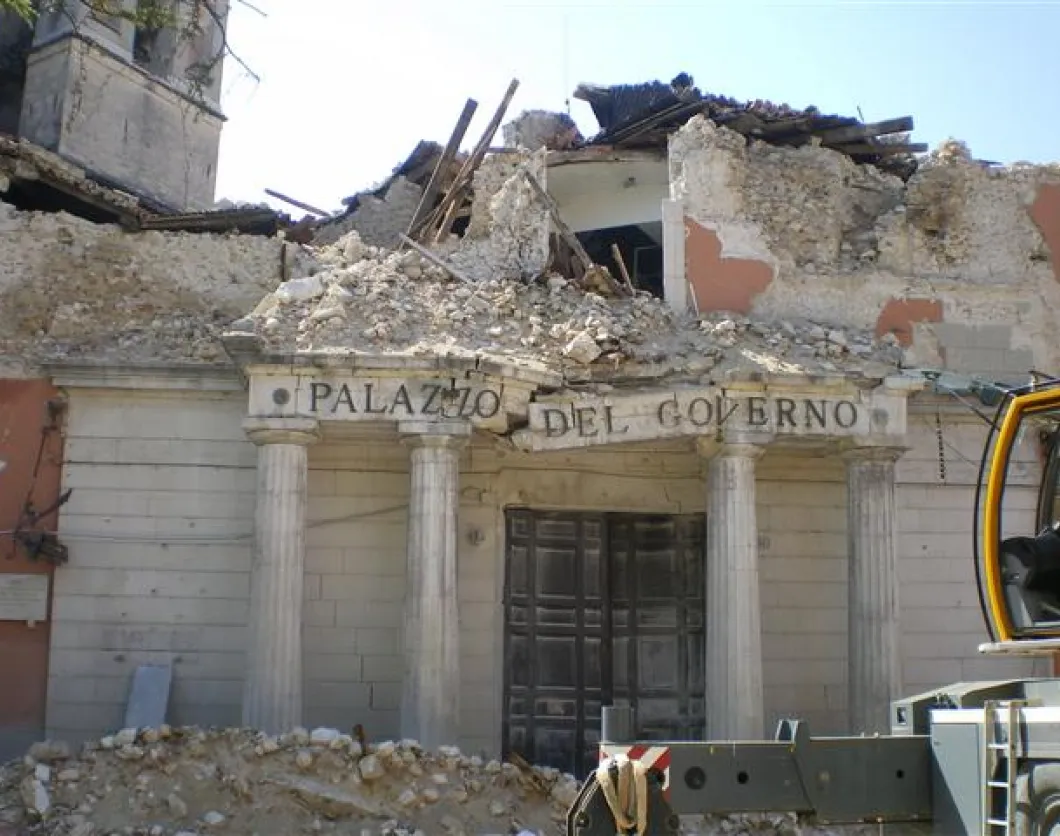As Europe’s 500 million citizens think of vacations, their choices are open to ever wider horizons and ever new cultural heritage treasures yet to be discovered. Or not?
Europe’s rich cultural heritage, both built and natural, is under constant threat from short-sighted development where economic expansion or fast money can conspire to erase those monuments and sites which together give a city, town or rural area its distinct identity and local colour.
Europa Nostra, the voice of cultural heritage in Europe, has as its mission raising awareness of the value of Europe’s unique and rich cultural heritage and to work to protect it for present and future generations. The organization supports national and international campaigns for the preservation and rescue of Europe’s heritage at risk. The following sites are some of the examples of Europa Nostra’s campaigns trying to save valuable landmarks.
Allianoi: Roman Baths and Spa to Be Flooded
Turkey has opened the flood-gates on the 2nd century Roman baths and spa at Allianoi, thus burying forever a potential tourist draw which could have been as important as Ephesus or Pompeï.
“Large local and international protests have called for Allianoi to be saved, clearly demonstrating that people attach great value to their history and memory. This gives depth and meaning to their lives. Every effort should therefore be invested in preserving those places – such as Allianoi – which connect us with previous generations and which we, in our turn, have the responsibility to transmit to future generations.” Thus wrote Europa Nostra’s President, Plácido Domingo, the world famous opera tenor, in his personal letter of appeal to Turkey’s Prime Minister Tayyip Erdoğan, to stop the flooding of the important archaeological site of Allianoi near the ancient city of Pergamum in Izmir.
The most recent reports from the Allianoi by the local “Allianoi Initiative” NGO led by Professor Ahmet Yaraş, chief archaeologist of the site, tell that workers employed by the Turkish State Waterworks have filled this outstanding Roman archaeological site with sand and started submerging it under the planned reservoir behind the Yortanli irrigation dam, one whose effective life-span is not expected to exceed 50 years... Even the tops of the excavated walls and columns have been buried under sand.
Discovered relatively recently, the ancient spa settlement Allianoi located near Bergama in western Turkey, dates mainly from the 2nd century AD when it was enlarged by the Emperor Hadrian. A time of emerging urban centers in Anatolia and of the construction of the famous Asklepion of nearby Pergamon, the number of public works built in Allianoi also increased, including the thermal baths, bridges, streets, insulae and the Connection Building, propylon and nympheum. Though Allianoi had been only partially excavated by archaeologists, the site has already revealed many historically rich monuments and important scientific insights into Roman art, architecture, engineering, hydrology, medicine and pharmacology.
Back in 2006, the Turkish Minister of Culture set up a Special Scientific Committee which recommended a series of alternative conservation measures which could be undertaken at Allianoi before the possible flooding of the area, including the protection of the site as a sunken island by the construction of an earth wall, or the relocation of some of the archaeological site’s most important structures. These recommendations brought some hope for the future of Allianoi, but were not pursued.
Already back in 2007, Europa Nostra joined forces with the International Council on Monuments and Sites (ICOMOS) and the European Association of Archaeologists to launch a forceful public appeal to save Allianoi. It seems, unfortunately, to no avail. A significant European cultural heritage site is being lost along with the potential for tourism-led economic development in the area. Tourism based on the unsustainable model of large hotels on gorgeous sandy beaches, might benefit those on the narrow strip alongside its coast but not the vast interior. Sites such as Allianoi which could be developed into a cultural and health tourism centre, would give deeper cultural and social meaning to the economic benefits of tourism.
L’Aquila: No Restoration after Earthquake
Heritage city of L’Aquila and the surrounding villages in the Abruzzo region, Italy still fenced-in awaiting restorations.
Italian heritage NGO Fondo Ambiente Italiano (FAI) unveiled the restoration of the 99 Cannelle, a symbolic fountain for the citizens of L'Aquila, located as it is in the central square of this historic city. This private initiative is the first and only tangible result of the monumental heritage restoration works taking place in the historic centre of L'Aquila, following the devastating earthquake of Spring 2009.
L'Aquila and the surrounding historic villages in the Abruzzo region were severely damaged in the 6 April 2009 earthquake: more than 300 people lost their lives and thousands of buildings were destroyed. More than 18 months later, the clean-up efforts of the broken historic centre have only barely started. Thousands of small businesses have had to close. The people are now housed in the new buildings on the outskirts of the town and are desperate to return to their homes. They wish once again to be able to welcome visitors to their city and region, an important source of income as well as a window onto the wider world.
“It is very, very sad. The people have not only lost their houses, they are in danger of losing their memory and the roots which are connected to this historic city. This is not only about stones, it is about people”, said Plácido Domingo in an exclusive interview with Europa Nostra. “The inhabitants of L'Aquila are not looking to find a new city in which to live; they wish their historic city to be restored in order that they can come back to live there where their ancestors have been living for centuries”.
Heritage campaigners from Italia Nostra reiterate their standpoint that planned restorations in the area should not be limited to the monumental churches and to those few buildings which are already classified protected monuments. It is vital that the conservation plan extend to cover the historic settlements as a whole, including their full network of streets, squares and buildings, with due safeguard of their corresponding social functions.
The Historic Town Centre of L’ Aquila and its surrounding small historic villages in the Region, should be rebuilt “as it was - where it was”. The historic settlement as a whole must be considered as a holistic complex, as a unique cultural landscape and object of heritage value. It is vital that this concept be made official and legally enforced. Only with such protection can the restoration of the intricate web of heritage buildings and urban spaces which make up the historic environment of L’Aquila and its surroundings, take place as an integrated project, including a complex historical analysis of the typology of the different elements that comprise this cultural landscape, along with a serious allocation of adequate resources.
FAI acted as the spokesperson of this collective civil action of restoring the 99 Cannelle included businesses, individuals and professionals, and was funded by the donations sent in by many Italians via SMS messages. It is hoped that this restoration, the first to be initiated and completed in L’Aquila, will kick-start the process of reclaiming the city from the rubble through completing the massive number of restorations still needed.
Art Nouveau Villa Grüneberg to Give Way to Tramline
The Grüneberg Villa in Szczecin (Poland) is currently slated for demolition to make way for a new Fast Tramway Line to be constructed in this city, known as Stettin until after WW II. Local and international heritage campaigners have appealed to local zoning authorities and State officials to save the villa by giving it formal monument classification and protection.
The Villa Grüneberg is a 1910 Jugenstil building of high architectural quality which retains well preserved details. It was planned by the then Director of Building of the City of Stettin, Dr. Adolf Stahl. The Villa is also historically significant, having been built as the home of the musical organ building Grüneberg family, well known – indeed famous in northern Europe and in countries around the Baltic Sea – for the quality of their organs. Many of these are still preserved today, also in Szczecin itself, and include the largest mechanical traction organ in the world, preserved in Liepaja (Latvia). The Grüneberg organ building factory adjoining the villa in Szczecin, was unfortunately demolished in the 1950s.
To proceed with the Fast Tramway project, the tram-rails would not even require a re-routing, but rather only the relocation of a drainage installation would be necessary, which surely can be accommodated without destroying the villa. The city officials agree that the building contains important Art Nouveau detailing, but they are afraid delays could put their EU funding in jeopardy. Saving ‘detached’ architectural details, being proposed by some officials, would remove them from their context and the history of the building – the things which potential tourist would come to experience!
Preserving Villa Grüneberg could encourage sustainable economic development through cultural tourism by potentially converting it and part of the site of the former organ factory into an International Organ Centre or Museum. Such an organ centre would offer Szczecin a real cultural feature and increase the city's attractiveness for tourists and students alike, from across the Baltic region and indeed Europe as a whole.
Photos: Author
By Europa Nostra
Europa Nostra is the representative platform of over 250 heritage non-governmental organizations. Its aim is to put heritage and its benefits in the mainstream of public consciousness and to make heritage a priority for public policies both at European and national levels. Its specific objectives are to promote, at a European level, high standards of quality in the fields of heritage conservation, architecture, urban and rural planning and to advocate a balanced and sustainable development of urban and rural, built and natural environment.










